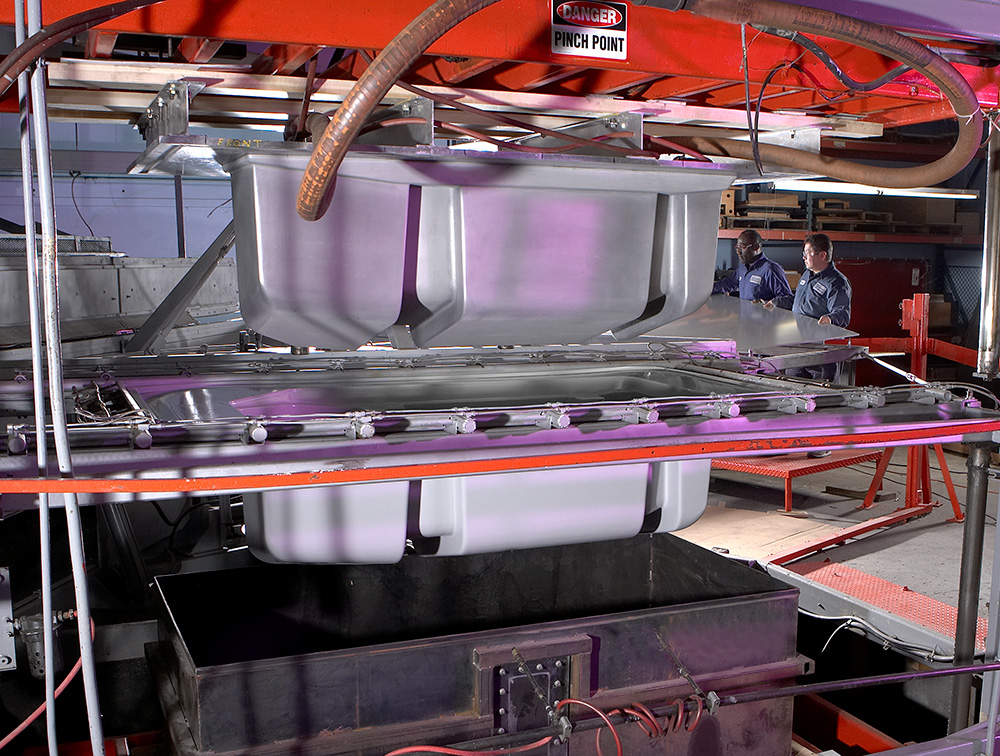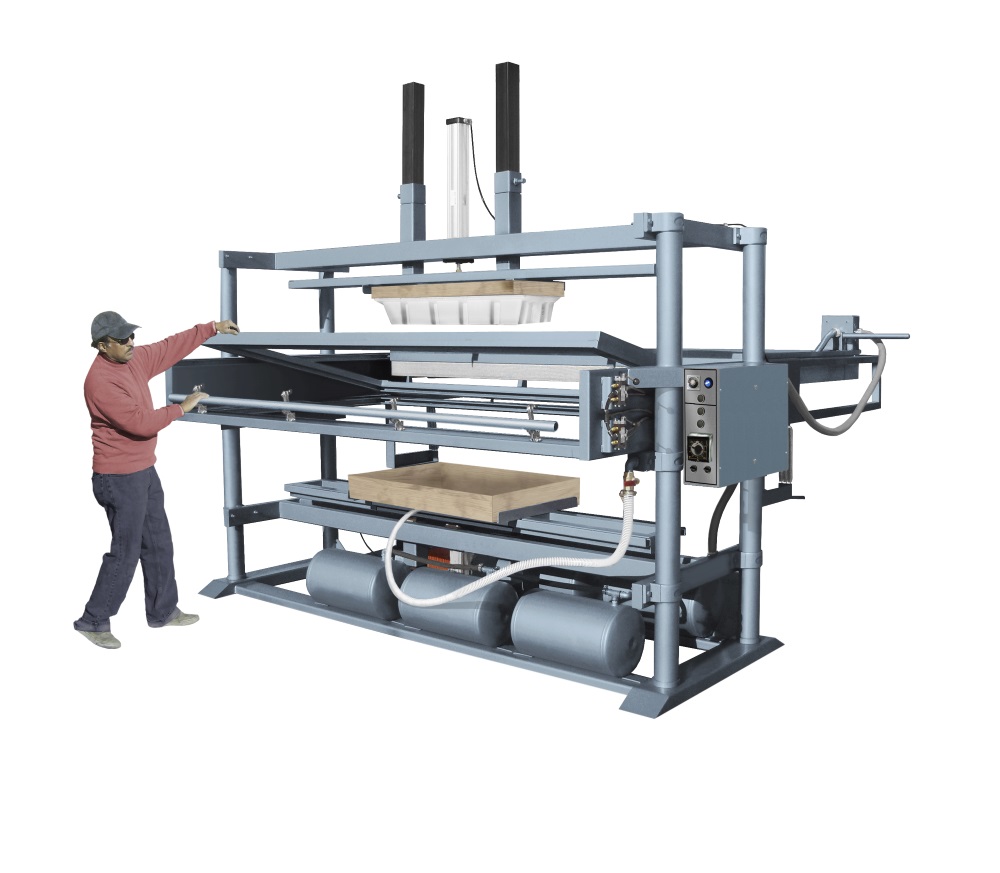Yes, polypropylene is commonly used for vacuum forming due to its flexibility, chemical resistance, and cost-effectiveness.

Properties of Polypropylene
Chemical Structure
The polymerization of propylene results in a chain-like structure of repeating propylene units. This chemical structure is responsible for many of its unique properties.
- Molecular Formula: C3H6
- Polymerization Type: Addition polymerization
- Ziegler-Natta catalyst plays a pivotal role in the polymerization of polypropylene.
Physical and Mechanical Properties
Physical and mechanical properties of polypropylene make it suitable for a wide range of applications.
- Density: Polypropylene has a lower density compared to many other plastics, making it lightweight.
- Tensile Strength: It boasts a decent tensile strength, ensuring durability in various applications.
- Elongation at Break: The material can stretch considerably before breaking, showcasing its flexibility.
- Stiffness: PP exhibits high stiffness, especially in fiber and filament forms.
- Optical Properties: Typically translucent but can be made transparent with certain processing techniques.
- For a deeper understanding, refer to the Polypropylene Wikipedia page.
Thermal Properties
Polypropylene’s thermal attributes contribute to its resilience in various temperature conditions.
- Melting Point: Polypropylene has a melting point of approximately 160°C to 170°C.
- Thermal Conductivity: It has a relatively low thermal conductivity, which means it’s not a good conductor of heat.
- Thermal Degradation: PP begins to degrade when exposed to temperatures above 300°C.
- Heat Deflection Temperature: It showcases stability under load at elevated temperatures.
Vacuum Forming Process
This technique is widespread for making a wide range of products due to its cost-effectiveness and efficiency.
Basics of Vacuum Forming
- Heating the Plastic Sheet: The process begins by taking a flat plastic sheet and heating it until it reaches a malleable state.
- Molding: Once heated, the soft sheet is placed over a mold.
- Vacuum Application: A vacuum is applied, pulling the sheet into the mold.
- Cooling and Solidifying: After shaping, the plastic cools and solidifies, retaining the molded shape.
- Trimming: Excess plastic is trimmed away, and the final product is removed from the mold.
Suitable Materials for Vacuum Forming
- Polystyrene (PS): Commonly used due to its ease of forming and relatively low cost.
- Polyvinyl Chloride (PVC): Offers excellent clarity, making it suitable for transparent applications.
- Acrylonitrile Butadiene Styrene (ABS): Provides good strength and rigidity.
- Polyethylene (PE): Known for its chemical resistance and toughness.
- Polypropylene (PP): Its resilience and flexibility make it an attractive choice, but it requires specific conditions to process efficiently.
Find more on thermoforming materials on the Thermoforming Wikipedia page.
Factors Affecting Vacuum Forming Quality
- Sheet Thickness: The thickness of the plastic sheet can impact the depth and detail of the form.
- Heating Time and Temperature: Uneven heating can result in imperfect forms.
- Vacuum Strength and Timing: The strength of the vacuum and how quickly it’s applied can affect the detail and sharpness of the mold replication.
- Mold Material and Finish: A mold’s surface finish can influence the finish of the formed product.
- Cooling Rate: Rapid cooling can sometimes cause warping or deformation of the plastic.

Polypropylene in Vacuum Forming
In the realm of vacuum forming, polypropylene holds a notable position due to its unique characteristics. Here’s a detailed exploration of its role in this process.
Advantages of Using Polypropylene
Polypropylene offers several benefits in vacuum forming:
- Resilience: Its tough nature ensures that formed products can withstand wear and tear.
- Flexibility: The ability to stretch without breaking provides design flexibility.
- Chemical Resistance: Polypropylene products resist many chemicals, making them suitable for containers and other related applications.
- Translucency: Allows for the creation of semi-clear products or products where light transmission is needed.
- Low Cost: Compared to certain other plastics, polypropylene can be more cost-effective.
Challenges and Limitations
Despite its advantages, there are challenges to consider:
- Pre-drying Requirement: Polypropylene often needs pre-drying to ensure a smooth forming process.
- Optimal Temperature Range: Achieving the right temperature for vacuum forming can be critical; too low, and it might not form correctly; too high, and it can degrade.
- Finish: It might not provide as glossy a finish as some other plastics, which can be a limitation for specific aesthetic requirements.
Case Studies and Real-world Applications
Polypropylene has found its way into various applications through vacuum forming:
- Packaging: Due to its flexibility and strength, it’s a common choice for packaging items that need a degree of protection.
- Medical Trays: Its chemical resistance and safe nature make it ideal for medical equipment trays.

Comparing Polypropylene to Other Plastics in Vacuum Forming
Selecting the right plastic for vacuum forming is crucial, as each material has unique properties that can affect the final product’s performance and appearance. Here’s a comparison of polypropylene with other common vacuum forming plastics.
Polypropylene vs. Polystyrene
| Feature/Property | Polypropylene | Polystyrene |
|---|---|---|
| Flexibility | ✔ High flexibility, tough and resilient | ❌ Brittle, especially in its general-purpose form |
| Cost | ✔ Generally cost-effective | ✔ Often cheaper than many other plastics |
| Heat Resistance | ✔ Can withstand higher temperatures | ❌ Lower heat resistance |
| Chemical Resistance | ✔ Resistant to many chemicals | ❌ Moderate chemical resistance |
| Environmental Impact | ✔ Recyclable, but not biodegradable | ❌ Recyclable, but significant environmental concerns due to styrene |
| Clarity | ❌ Translucent but can be made clearer with treatments | ✔ Naturally clear and glossy |
Polypropylene vs. PET (Polyethylene Terephthalate)
| Feature/Property | Polypropylene | PET |
|---|---|---|
| Flexibility | ✔ High flexibility | ❌ Less flexible, more rigid |
| Cost | ✔ Often more affordable | ❌ Might be slightly more expensive |
| Heat Resistance | ✔ Good heat resistance | ❌ Moderate, can deform at high temperatures |
| Chemical Resistance | ✔ Resistant to many chemicals | ✔ Good chemical resistance |
| Environmental Impact | ✔ Recyclable, but not biodegradable | ✔ Widely recycled, especially for bottling applications |
| Clarity | ❌ Translucent | ✔ Crystal clear and glossy |
Polypropylene vs. ABS (Acrylonitrile Butadiene Styrene)
| Feature/Property | Polypropylene | ABS |
|---|---|---|
| Flexibility | ✔ High flexibility | ❌ Rigid and tough |
| Cost | ✔ Generally cost-effective | ❌ Often pricier than polypropylene |
| Heat Resistance | ✔ Can withstand higher temperatures | ❌ Lower than polypropylene but decent |
| Chemical Resistance | ✔ Resistant to many chemicals | ❌ Moderate chemical resistance |
| Environmental Impact | ✔ Recyclable, but not biodegradable | ❌ Recyclable but not as widely as polypropylene |
| Finish/Appearance | ❌ Matte finish unless treated | ✔ Can achieve a glossy finish |
Optimizing the Vacuum Forming Process with Polypropylene
Using polypropylene in vacuum forming requires understanding the nuances of the material to optimize the process and achieve high-quality results. Here are some recommendations and considerations to enhance the vacuum forming process when working with polypropylene.
Pre-heating and Drying
- Significance: Before the vacuum forming process, polypropylene sheets often contain moisture, which can cause bubbles or imperfections during heating and molding. Proper pre-heating and drying can prevent these issues.
- Drying Recommendations: Common drying temperatures range between 60°C to 80°C. It’s advisable to use a dehumidifying dryer for best results.
- Storage: After drying, store the sheets in a moisture-free environment or pack them with desiccants to prevent re-absorption of moisture.

Molding Temperature Recommendations
- Optimal Temperature: The ideal temperature for vacuum forming polypropylene typically ranges from 140°C to 160°C. However, it might slightly vary depending on the sheet thickness and specific grade of polypropylene used.
- Uniform Heating: Ensure even heating across the sheet for consistent and uniform forming. Uneven heating can lead to imperfect forms and weak spots in the final product.
- Monitoring: Use infrared thermometers or thermal imaging cameras to monitor the temperature of the sheet during heating.
Post-forming Considerations
- Cooling: Allow the formed polypropylene product to cool slowly. Rapid cooling might induce stresses or warping in the final product.
- Trimming: Use sharp tools for trimming to ensure clean edges, as polypropylene can sometimes be tough and might cause frayed edges with dull instruments.
- Recycling: Polypropylene scraps and off-cuts can be recycled to reduce waste. Ensure to separate it from other plastic types for efficient recycling.




